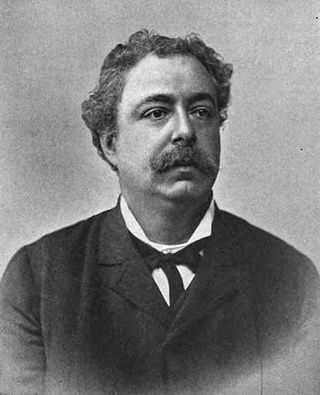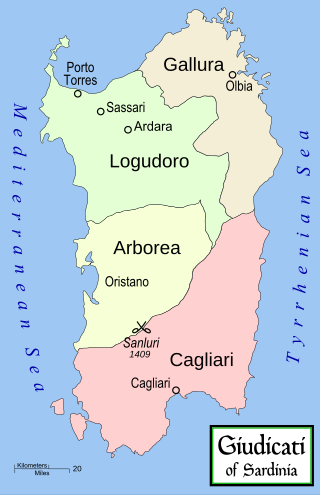
Edmondo De Amicis was an Italian novelist, journalist, poet, and short-story writer. His best-known book is Cuore, a children's novel translated into English as Heart.

Fiore Furlano de Cividale d'Austria, delli Liberi da Premariacco was a late 14th century knight, diplomat, and itinerant fencing master.

Francesco Guccini is an Italian singer, songwriter, actor, and writer. During the five decades of his music career he has recorded 16 studio albums and collections, and 6 live albums. He is also a writer, having published autobiographic and noir novels, and a comics writer. Guccini also worked as actor, soundtrack composer, lexicographer and dialectologist.

Alberto Pincherle, known by his pseudonym Alberto Moravia, was an Italian novelist and journalist. His novels explored matters of modern sexuality, social alienation and existentialism. Moravia is best known for his debut novel Gli indifferenti and for the anti-fascist novel Il conformista, the basis for the film The Conformist (1970) directed by Bernardo Bertolucci. Other novels of his adapted for the cinema are Agostino, filmed with the same title by Mauro Bolognini in 1962; Il disprezzo, filmed by Jean-Luc Godard as Le Mépris ; La noia (Boredom), filmed with that title by Damiano Damiani in 1963 and released in the US as The Empty Canvas in 1964 and La ciociara, filmed by Vittorio De Sica as Two Women (1960). Cédric Kahn's L'Ennui (1998) is another version of La noia.

The Flos Duellatorum is the name given to one of the manuscript versions of Fiore dei Liberi's illuminated manuscript fight book, written in 1410. There are five other surviving recensions, under the title Fior di Battaglia. Both Flos Duellatorum and Fior di Battaglia translate into English roughly as "The Flower of Battle," from Latin and Italian respectively.

The Scrovegni Chapel, also known as the Arena Chapel, is a small church, adjacent to the Augustinian monastery, the Monastero degli Eremitani in Padua, region of Veneto, Italy. The chapel and monastery are now part of the complex of the Musei Civici di Padova.

Carlo Lizzani was an Italian film director, screenwriter and critic.

Dacia Maraini is an Italian writer. Maraini's work focuses on women's issues, and she has written numerous plays and novels. She has won awards for her work, including the Formentor Prize for L'età del malessere (1963); the Premio Fregene for Isolina (1985); the Premio Campiello and Book of the Year Award for La lunga vita di Marianna Ucrìa (1990); and the Premio Strega for Buio (1999). In 2013, Irish Braschi's biographical documentary I Was Born Travelling told the story of her life, focusing in particular on her imprisonment in a concentration camp in Japan during World War II and the journeys she made around the world with her partner Alberto Moravia and close friends Pier Paolo Pasolini and Maria Callas. In 2020 she adheres to Empathism.
Scapigliatura is the name of an artistic movement that developed in Italy after the Risorgimento period (1815–71). The movement included poets, writers, musicians, painters and sculptors. The term Scapigliatura is the Italian equivalent of the French "bohème" (bohemian), and "Scapigliato" literally means "unkempt" or "dishevelled". Most of these authors have never been translated into English, hence in most cases this entry cannot have and has no detailed references to specific sources from English books and publications. However, a list of sources from Italian academic studies of the subject is included, as is a list of the authors' main works in Italian.

Paolo Gorini was an Italian mathematician, professor, scientist, and politician renowned as a pioneer of cremation in Europe, primarily in the United Kingdom.

Ottone Visconti was Archbishop of Milan and Lord of Milan, the first of the Visconti line. Under his rule, the commune of Milan became a strong Ghibelline city and one of the Holy Roman Empire's seats in Italy.
Giancarlo Vitali was an Italian painter and engraver.

Carlo Ninchi was an Italian film actor. He appeared in more than 120 films between 1931 and 1963.

In 1015 and again in 1016, the forces of Mujāhid al-ʿĀmirī from the taifa of Denia and the Balearics, in the east of Muslim Spain (al-Andalus), attacked Sardinia and attempted to establish control over it. In both these years joint expeditions from the maritime republics of Pisa and Genoa repelled the invaders. These Pisan–Genoese expeditions to Sardinia were approved and supported by the Papacy in aid of the sovereign Sardinian medieval kingdoms, known as Judicates, which resisted autonomously after the collapse of the Byzantine rule on the island. and modern historians often see them as proto-Crusades. After their victory, the Italian cities turned on each other. For this reason, the Christian sources for the expedition are primarily from Pisa, which celebrated its double victory over the Muslims and the Genoese with an inscription on the walls of its Duomo.

The Vettor Pisani class consisted of two armoured cruisers built for the Royal Italian Navy in the 1890s. The two ships of the class, Vettor Pisani and Carlo Alberto, were frequently deployed overseas during their careers. The former served in the Far East during the Boxer Rebellion of 1900 while the latter was involved in pioneering long-range radio experiments several years later before deploying to South American waters. Carlo Alberto then served as a training ship for several years. Both ships participated in the Italo-Turkish War of 1911–12 and played minor roles in World War I, during which time Carlo Alberto was converted into a troop transport and Vettor Pisani into a repair ship. They were both discarded in 1920 and subsequently scrapped.
Costantino D'Orazio is an Italian art critic and curator.

Elisabetta Catalano was an Italian fine-art photographer mostly specialized in black and white and color portraiture.
Carlo Alberto can refer to:

Raissa Samojlovna Calza was a Ukrainian dancer who became a prominent classical archaeologist of Roman portraiture. When she was young, she fled to Italy and France following the Russian Revolution.

Alberto Magliozzi is an Italian glamor photographer.
















